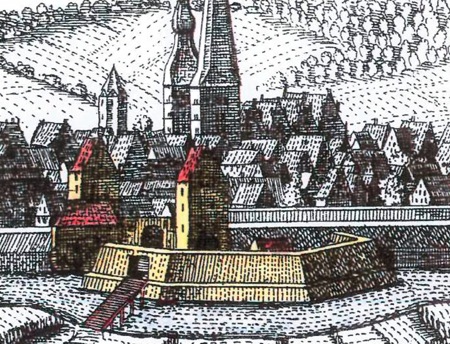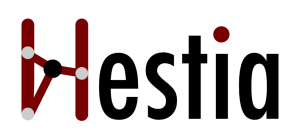 In September, the European Association of Archaeologists (EAA) held its meetings in Pilsen, Czech Republic. I attended this meeting, and participated in a roundtable on ‘Ephemeral Landscapes,’ organized by Martijn vanLeusen, Andrew Bevan, Kayt Armstrong, and Wieke deNeef. The workshop was well attended, and a lively discussion was held on the state of landscape archaeology and geospatial applications. As we are on the cusp of the AIA meetings in Chicago, I present my thoughts and general takeaways. These are my own ideas/impressions and I am not representing anyone but myself in these thoughts.
In September, the European Association of Archaeologists (EAA) held its meetings in Pilsen, Czech Republic. I attended this meeting, and participated in a roundtable on ‘Ephemeral Landscapes,’ organized by Martijn vanLeusen, Andrew Bevan, Kayt Armstrong, and Wieke deNeef. The workshop was well attended, and a lively discussion was held on the state of landscape archaeology and geospatial applications. As we are on the cusp of the AIA meetings in Chicago, I present my thoughts and general takeaways. These are my own ideas/impressions and I am not representing anyone but myself in these thoughts.
The following papers were presented:
The excavation of a hunting thicket in Roissy (France)
by Jean-Yves Dufour (INRAP, France)
Minor and off-sites: the Pisa South Picenum Project (The Marches, Italy)
by Simonetta Menchelli (University of Pisa, Italy), Marinella Pasquinucci (University of Pisa, Italy)
The detection of rural activity patterns through intensive archaeological survey. Some experiences form south-west Iberia
by Luis Sevillano Perea (Merida Institute of Archaeology, Spanish Research Council (CSIC), Spain), Victorino Mayoral Herrera (Merida Institute of Archaeology, Spanish Research Council (CSIC), Spain)
The intersection of theory and practice in “marginal” mountainous landscapes: the investigation of past human-environment interactions in the southwestern Alps
by Kevin Walsh (University of York, UK), Francesco Carrer (University of York, UK),Florence Mocci (CNRS, France)
Laying bare the landscape: large-scale rural archaeology in the upper Thames valley, England
by Roger M Thomas (English Heritage, UK), Chris Gosden (University of Oxford, UK),Morrison Wendy (University of Oxford, UK)
Developing interpretative frameworks for ephemeral artifact scatters: a geoinformatic example from central Turkey
by James Newhard (College of Charleston, USA)
Uncertainty and persistence: rural signatures and archaeological survey
by Andrew Bevan (University College London, UK)
During and after, there was quite a bit of discussion between the audience and speakers, bringing out several themes in my mind. Some of these I see as providing interesting and fruitful areas for concerted attention, others are time-worn issues that seem in no real way currently solvable (if they even need solving).
Data interoperability. Work from the Upper Thames brought this point to light. In this region, Thomas noted the wide variety of projects and studies, initiated over a span of decades, and the complexity that arises from the perspective of data mining. It is in no way an isolated case. Developing systems for integrating divergent studies is an imperative – especially for areas where there is intensive activity from multiple entities. The conversation moved into discussing ways in which methods could be streamlined. On one level, this is a valid discussion. On another, I feel the need for caution. If we focus excessively on streamlining methods, we enter into a morass where people start championing specific approaches and run the risk of stifling innovation in method and the exploration of new avenues of investigation. Another point against methodological standardization is the fact that this is a field of already tremendously deep datasets – how would earlier projects be integrated?
Rather, systems of integration should be pursued that are able to lay over individualistic approaches. Geospatial applications, with their capacity to statistically smooth divergent datasets, may be an area where these systems can be best developed. As opposed to thinking of methods standardization that could run the risk of standardizing research questions and ignoring local needs (whether dependent upon terrain, material, or legal strictures), I would suggest looking towards the idea of data standardization. The issue then becomes a matter of statistical standardization, a matter that is not unique to archaeology, and for which there may be solutions residing in other disciplines such as biology, geology, sociology, to name a few.
Ethnographic and historical analogs. The use of historical or ethnographic analogy was often addressed in the papers (Menchelli, Newhard) and within the ensuing discussion. The overriding consensus appeared that analogs should not be used as strict proxies, but rather as guides for developing further questions, and possibly tipping the balance towards one interpretation over another (barring other evidence to the contrary).
Greater rigor in assigning functional attributes. In this area, we are starting to see some movement. There are beginnings of stating some criteria, and then assigning function based upon those stated criteria. We’ve been doing this for some time, but the definitions have been very generalized (it’s a biggish spread of pottery, must have been a farm house…). The capacity to integrate geospatial elements is yielding new developments in making these criteria more complex and explicit. We’re moving from a practice of inductiveness to deductiveness, which should yield opportunities in the future for stronger systems of data collection and analysis. We need not concern ourselves with offering explanations for every observed piece of antique detritus, but be intent upon describing and assigning function to as much as possible, with an explicit argument stated for those assignments.
Lack of theoretical approaches. Within the presentations – and even continuing into the discussions – there was a general lack of theoretical paradigms. Despite this, there was in the air scents of several broad approaches. Speaking generally, there was a close cultural historical approach (Tiber), the more positivistic/quantitative approach (Spain, Calabria, Antikythera), and more reflexive, open perspective (Turkey- although still highly positivistic/quantitative). Phenomenological contexts appeared least represented, although such approaches would have been possible. Although theory and method cannot be separated, in my opinion, the subject of the workshop was methodologically focused, leading to a lessened focus upon theoretical approaches.
Geospatial applications. Underlying most, if not all, of these issues is the need for an extensive application of GIS and other spatial applications. Data interoperability and functional modeling, in particular, are issues where intensive use of geospatial applications are inherently required, and should be included within the basic toolkit of any person involved in the practice of landscape archaeology.
Overall, I view efforts to consolidate methods to be a red herring that would move us away from more effective contributions. A sense of best practices have generally been in place since the days of Plog, Plog, and Wait (if not earlier), and what we should be encouraged is refinement and development of technological tools and analytical techniques that build upon the general methods of the past. Areas of growth reside in the areas of data interoperability and developing/encouraging systems that seek to describe and explain archaeological signatures in a structured and systemic fashion, with an eye towards allowing a variety of theoretical approaches to be brought to bear on the data.


 Figure 1: The Langenbrücker gate on a copperplate print of Elias and Henry van Lennep, about 1663
Figure 1: The Langenbrücker gate on a copperplate print of Elias and Henry van Lennep, about 1663



